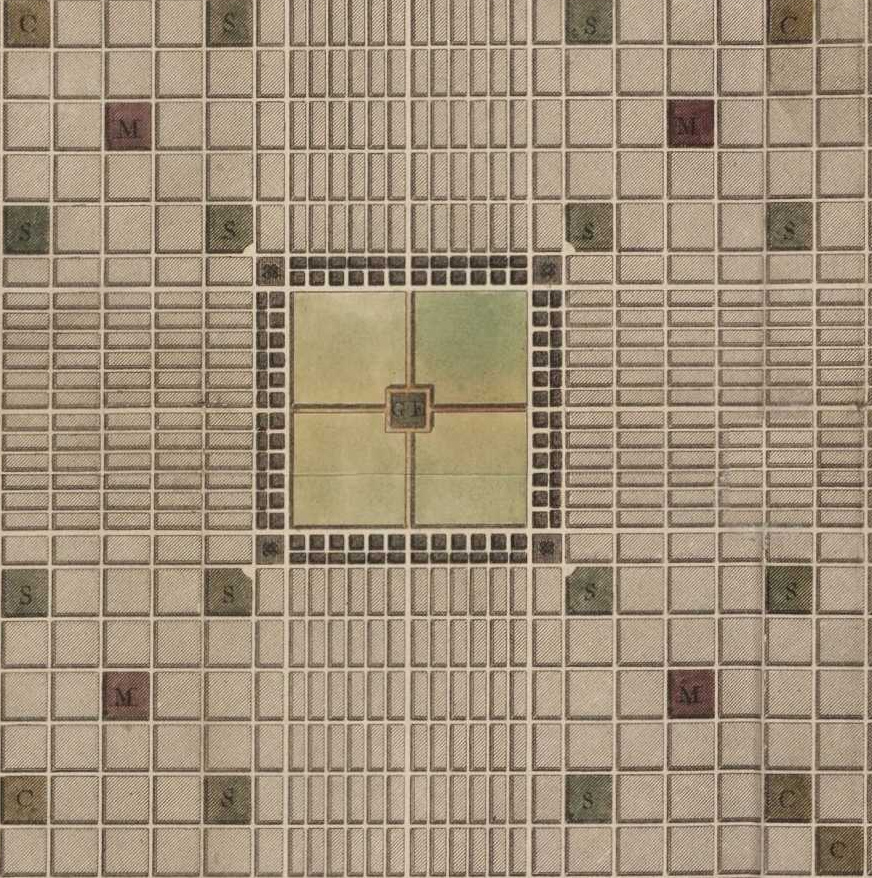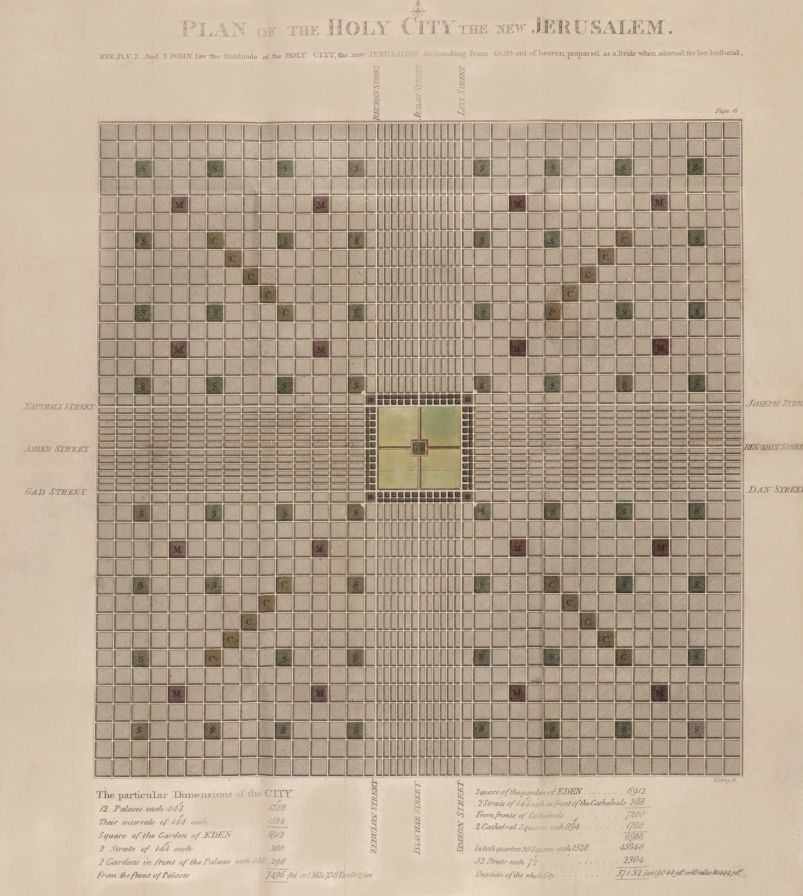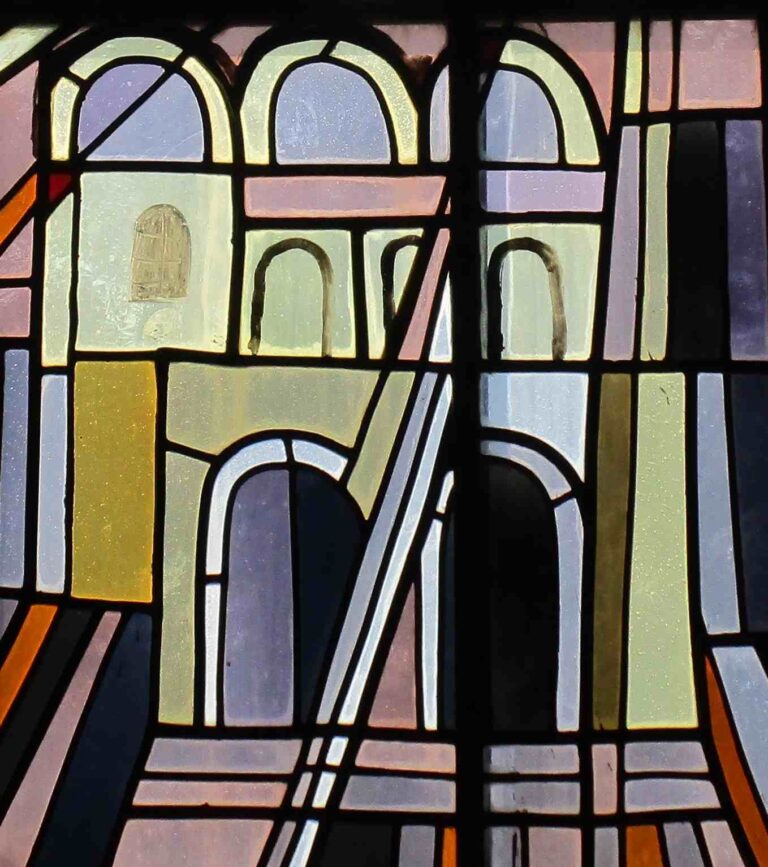
Richard Brothers (1757-1824), Wilson Lowry (1762-1824): Stadtplan „Plan of the Holy City the New Jerusalem“ (1802)
Richard Brothers (1757-1824), ein Seemann und Abenteurer, war der selbsternannte „Prince of the Hebrews and Nephew of the Almighty“. Mit seinen Anhängern wollte er die Gottesstadt 1798 in Palästina aufbauen und zwar exakt nach diesem utopischen Stadtplan. Überschrieben ist er: „Plan of the Holy City the New Jerusalem“. Richard Brothers eigenwillige Vorstellungen, denen selbst der Maler und Mystiker William Blake (1757-1827) zeitweise folgte, sind als Anglo-Israelism (British-Israelism) in die englische Religionsgeschichte eingegangen. Solche Bestrebungen lagen damals in der Luft, auch im württembergischen Neupietismus gab es Gruppierungen, die eine Auswanderung nach Israel anstrebten und auch umsetzten.

Angefertigt hat diesen Stich, der sich heute in der British Library in London befindet, Wilson Lowry (1762-1824), ein wegen seiner technischen Fertigkeiten geschätzter Kupferstecher. Über vierzig Straßen durchqueren die Großstadt. Zwölf davon sind Hauptstraßen, die nach den zwölf jüdischen Stämmen benannt sind. Es ist ein Rasterplan, nach dem vor allem amerikanische Städte erbaut wurden. In der Stadtmitte findet sich eine freie Grünfläche mit einem zentralen Gebäude. Hier sollte sich der Königspalast befinden, inmitten eines Garten Eden und weiteren 48 Palästen, Gärten und Kathedralen, denn entgegen dem Wortlaut der Johannesoffenbarung spielen Gotteshäuser hier eine nach wie vor traditionelle Rolle.
Morton D. Paley: William Blake, the Prince of the Hebrews, and the Woman Clothed with the Sun, in: Morton D. Paley, Michael Phillips (Hrsg.): William Blake. Essays in honour of Sir Geoffrey Keynes, Oxford 1973, S. 260-293.
Jon Mee: Dangerous enthusiasm. William Blake and the culture of radicalism in the 1790s, Oxford 1992.
‚The Anglo-Israelites’ in: Donna Kossy: Kooks. A guide to the outer limits of human belief, Portland 1994.
David Bindman: The English Apocalypse, in: Frances Carey (Hrsg.): The Apocalypse and the shape of things to come, Toronto 1999, S. 208-269.



